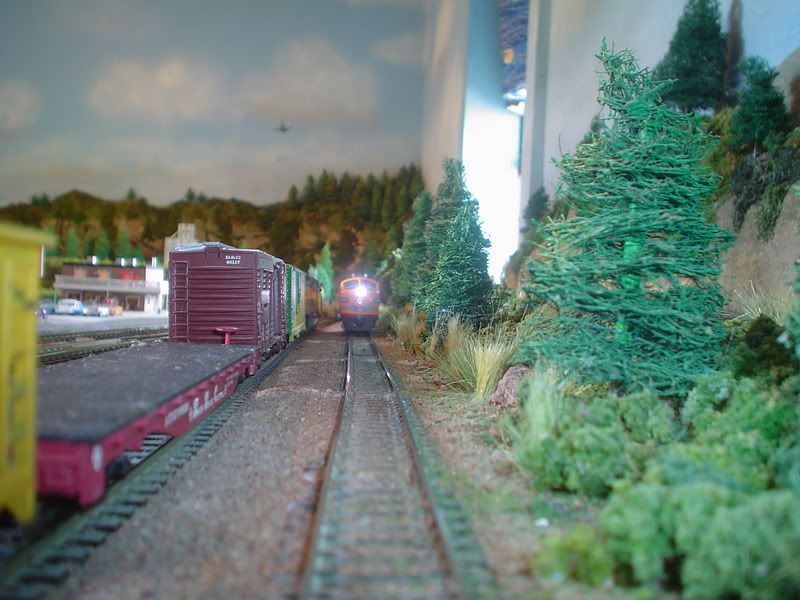I have been looking a pics of locos and was wondering what is the difference in a GP38-2 and a GP40?
Also I took this pic last night and thought it was kinda neet so I will share it with you this morning.

Mike
I have been looking a pics of locos and was wondering what is the difference in a GP38-2 and a GP40?
Also I took this pic last night and thought it was kinda neet so I will share it with you this morning.

Mike
A GP-38 has two exhaust fans on re rear roof, the GP-40 has three. Many more differences too probably, but these are the ones I recall.
Bob Boudreau
The GP38-2 has a V-16 engine with 645 cu in per cylinder that is “normal aspirated”.
The GP40-2 has a V-16 engine with 645 cu in per cylinder that is turbocharged.
The GP38-2 has two to four exhaust vents on the roof (small oblong vents) over the center of the long hood.
The GP40-2 has one large turbo exhaust vent on the roof, towards the front of the long hood.
Dave H.
Differences can be virtually cosmetically different on the outside like the difference of louvres on the side.
But it could have different engines or interiour designs.
Diesel Spotters guide is perfect for that.
GP38-2 develops 2000hp because it’s not turbocharged… The GP40-2 develops 3000hp due to the turbocharging.
Because of that, they are used for different purposes… GP38-2s are used for service where top speed are not crucial (such as local freight trains that involve a lot of switching), and are pressed into service sometimes as yard switchers. You can also use GP38-2s for mainline road service though, where speed isn’t important. I think the GP38-2 is supposed to be more fuel-economical because it’s non-turbocharged.
GP40-2s on the other hand have a reputation for being a “sports car”… Lots of engineers love how it accelerates very quickly and can maintain a fast road speed. Railroads like the Denver Rio Grande & Western have used GP40s and GP40-2s in the past on their fast intermodal trains like the Rail Blazer.
From the railroad’s perspective, maintenance is also a difference. The turbocharger itself is a high-maintenance item that’s prone to catastrophic failure if neglected. Also, the prime mover (the actual diesel motor) is stressed more because of the turbocharging.
Over the years, I’ve heard of a number of rebuild programs where locos have been de-turbo’ed (and their horsepower down-rated accordingly) to lessen the long-term maintenance costs. But I’ve never heard of a rebuild program where turbos were added.
Steve
Mike, that IS a neat picture! Nicely done ![]()
The GP38-2 was produce from 1/72-1987 for a total of 2208 units.The GP38-2 is powered by a 16-645E 16-cylinder Roots blower prime mover rated at 2000 HP.The GP38-2 has been called the GP9 of the 80s.
Spotting features…Spoting features is very similar to the GP38.There is a water sight glass on the left side.See photo.
http://www.railpictures.net/viewphoto.php?id=136345
=======================================================
EMD produce the GP40 from November 1965 to December 1971 for a total of 1243 units.
The GP40 is powered by a 16-645E3 V16 turbocharged prime mover rated at 3000 HP.
Spotting features.The GP40 has 3 48" fans and no water sight glass like the GP40-2.
A GP40
[#ditto] [:D] That picutre does look great. Love that back drop and painted room!
Dehusman hit it right. I don’t where you got your info from, but the 38 is not turbocharge and has 2 fans, where as the 40 is turbocharge with 3 fans for cooling.[:P]
No the GP38-2 is not turbocharged but,it does have a roots blower.